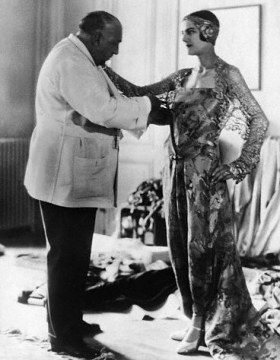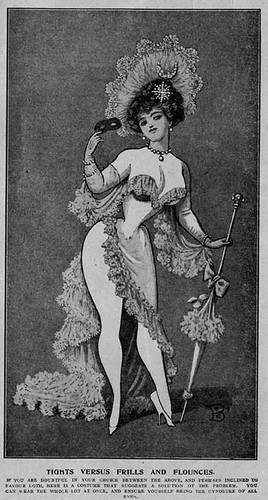I finally got through the 1400-or-so pages of the Taschen reprint of John Willie’s Bizarre.
Bizarre is definitely in the tradition of Englishwoman’s Domestic Magazine, London Life, Photo Bits, but unlike them it made almost no pretense of being a general interest magazine. It never completely gives up the pretense. Most issues include a photo or illustration of a woman tied up with the captions “Don’t let this happen to you!” and “Learn Jiu-Jitsu and the art of self-defense.” I believe it was sold through adult stores instead of general interest newsstands.
A brief rundown of the fetishes: bondage, corsetry, high heeled shoes and boots, gagging, cross-dressing, amputees, masks, spanking and humiliation.
The second volume is less interesting, as there’s little of Willie’s art, replaced by photo reprints from movies, and the letters get repetitive. There are also fewer editorials in Willie’s voice, a man-of-the-world who writes on fashion and style, in a kind of faux aristocrat tone.
As with all fetish correspondence magazines, there’s the question of how much, if any, of these letters were real, and how much, if any, were mailed in from readers instead of being written in house. My take is that the letters came from readers, for the most part, though probably edited a bit.
Some of them are more plausible than others. One guy wrote in with tips on how to smuggle cameras into movie theaters and take pictures of the film, and included a list of movies with bondage scenes in them. This is a distant ancestor of the video captures traded on the internet today.
At least one of them was for real. “Ibitoe”, later known as Fakir Musafar, wrote in Volume 21 in about his self-driven body modification efforts. It’s likely that this was the early form of the modern body modification/modern primitive culture, just isolated individuals pursuing their own muses, and no means of connection other than these obscure magazines.
The editorial material has a backwards-looking tendency common in fetish publications. Some of the stories refer to Victorian-era clothing and social relations, with “Memoirs of Paula Sanchez” purporting to be a 19th century memoir. Other features wax Orientalist. Volume 19 had “Saudi Arabian Nights”, supposedly based on “Flesh for Sale”, an article published in the New York Post in 1956, which claims that the slave trade continues in modern-day Saudi Arabia. Accurate or not, the author of the article instead switches to “the report of a British agent who was through the area in the early 30’s,” privileging this anonymous “agent’s” account over the more recent news article. The “agents” account goes into pornographic detail about the alleged slave markets, describing the slaves and how they were dressed and bound, and speculating about Russian female aristocrat ending up as slaves.
A letter in Volume 26, “Eastern Diplomacy”, is another classic Orientalist fantasy set in Turkey circa 1917, full of harems and flagellation.
Another letter by “Darlene” (Vol. 24) had a man forced, by blackmail, to dress as black woman and to pick cotton.
I had hoped that there would be some suggestion of what the hetero BDSM culture, if any, was like the USA in the 1940s and 1950s. Once you remove the letters that are just implausible, there doesn’t seem to be a culture, just isolated individuals writing letters to magazines and newspapers, and gleaning bits of fetish art and photography from mainstream culture.
Nonetheless, this is an ancestor of the modern BDSM/fetish culture.


